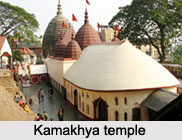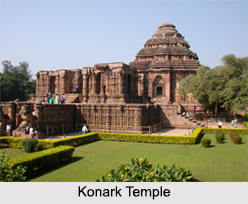 Temple sculpture of East India had created a unique sculpture in stone and metal. The selection of bronze as a standard for sculpture was put chiefly in eastern India, Kashmir and Nepal. Early use of paintings as a figure began in eastern India, Gujarat, Rajasthan and Nepal. East Indian temples found in the North-East, Bengal and Odisha and each of these three areas created a different kind of temple.
Temple sculpture of East India had created a unique sculpture in stone and metal. The selection of bronze as a standard for sculpture was put chiefly in eastern India, Kashmir and Nepal. Early use of paintings as a figure began in eastern India, Gujarat, Rajasthan and Nepal. East Indian temples found in the North-East, Bengal and Odisha and each of these three areas created a different kind of temple.
A large number of sculptures have been found in Assam and West Bengal, which demonstrates the expansion of significant provincial schools in those regions.
Different Temples Sculptures of East India
Huge variety, intricate and explicit carvings and charming patterns and structures are the most alluring features of these sculptures. Sculpture of Eastern India holds immense historical as well as cultural significance. Different features and works of Temple"s sculptures of East India are as follows:
Assam: Kamakhya temple, a Shakti peeth is contributed to goddess Kamakhya and was built in the 17th century. The approach came with the immigration of the Tais from upper Burma mixed with the central Pala style of Bengal and led to the formation of what was later known as the Ahom style in and around Guwahati. The post-Gupta technique persisted in the region well in the 10th. An aged 6th century sculpted door frame from DaParvatia near Tezpur and one more few wandering sculptures from Rangagora Tea Estate near Tinsukia in Assam witnessed to the introduce of the Gupta idiom in that region. Devi Dol Temple at Gaurisagar near Golaghat is a temple dedicated to Devi with interesting architectural and sculptural features. Sib Dol Temple at Shibsagar has numerous walls and pillars within the temple are sculptured with the figures and images of Hindu Gods and Goddess. Hayagriva Mahadeva Temple at Hajo near Guwahati has interesting sculptural work. Madan Kamdev temple also deserves a mention here.
West Bengal: West Bengal is known for its terracotta sculpture. Temple sculpture in West Bengal has been influenced by Pala and Sena dynasty rulers. Bishnupur has several temples where one can see the exquisite sculpture of scenes and illustrations of current events and trends on the walls, the panels and sculptured pillars are some of the remarkable features of these temples. Various stories of the Puranas and phases of Krishna Lila have been reproduced on the walls. Other notable temples of sculpture are Gokul Chand temple, Hanseswari temple, Madanmohan Temple and Krishna Chandra Mandir.
Bihar: Bihar is known for Mahabodhi temple dedicated to Lord Buddha. The Chaubishi Jian temple of Patna is also known for its sculpture. Numerous temples in Nalanda and Rajgir have been ravished by time. Aranya devi and Badi Patan devi temples have minimal sculptures.
Odisha: Temples of Odisha are known for beautiful and explicit erotic sculptures. For example sculptures of Konark temple. Many of the sculptural scenes are taken from religious mythology and legends; many represent military and courtly life; many represent activities which would have been associated with the temple. Other heavily sculptured temples include Lingaraja temple, Mukteswara temple, Svarnajaleswar Temple, Yameswar Temple near Khandagiri, Bhaskareswar Temple in Megeswar, Leaning Temple Huma near Sambalpur, Sarankul Temple, Simhanath Temple in Cuttack District, Jagannath Temple in Deogaon, Biraja temple in Jajpur district, Laxminarayan Temple in Therubali, Sureswar and Gouri Temple in Bhubaneshwar and several others. Jagannatha temple of Puri is a part of Char Dham and is celebrated for its yearly Ratha Yatra or Chariot festival.



